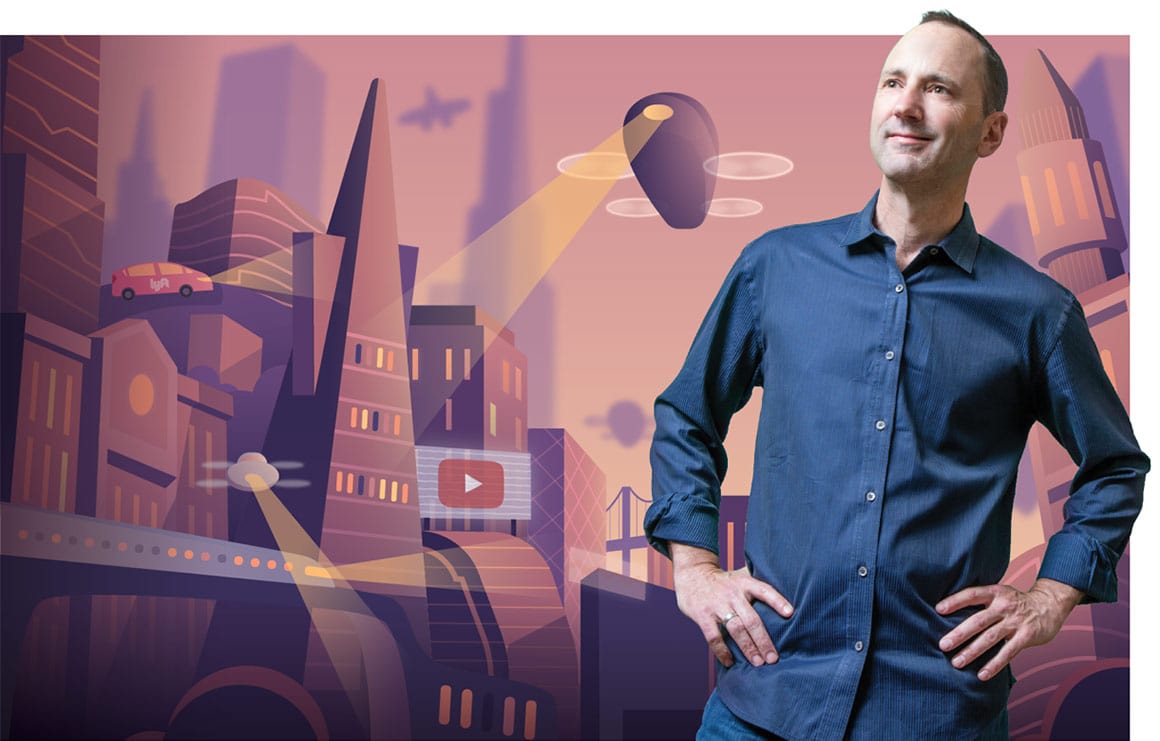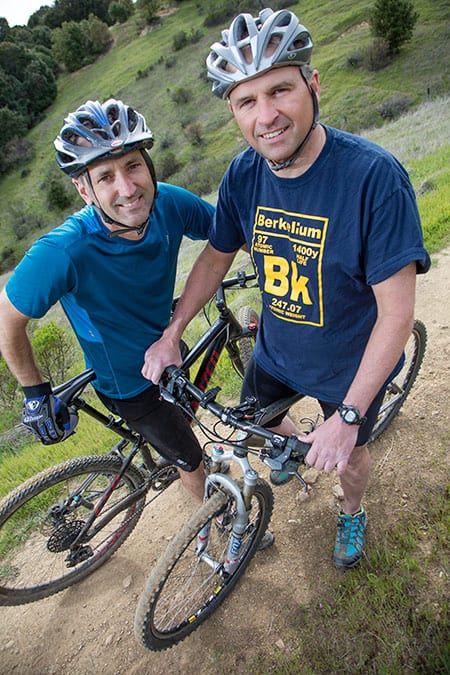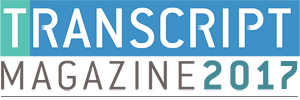
David Estrada ’93 fuels the tech revolution with hard work, keen insight, and a bit of clairvoyance.
By Andrew Faught
The two-story, white concrete building stands in a Mountain View industrial park overlooking the Bay wetlands. The structure bears no identification, its black windows made of privacy glass to deter prying eyes.
For more than a year after its stealth beginning, the company’s one-page website displayed only its logo and a jobs link, betraying nothing that happened behind its walls. A LinkedIn description hinted tersely: “Kitty Hawk is a Silicon Valley technology company dedicated to building a new era of flight.”
On April 24, however, the company made an eyebrow-raising announcement that got prominent coverage in The New York Times: Kitty Hawk will release its first personal electric aircraft to the public—the Kitty Hawk Flyer—before the end of this year.
While the name honors the first flying machine built and flown by the Wright brothers, this modern version is small enough to fit in a home garage—where you can also charge it. And no pilot’s license is required because the Flyer falls within the Ultralight category of Federal Aviation Administration regulations, which are classified as vehicles, not aircraft.
Those conducting this work, including David Estrada ’93, might be accused of folly. But over the past decade, Estrada has shown an uncanny ability to shape the world’s unfolding, and at times seemingly improbable, tech revolution— paving the way for Google self-driving cars, legalizing the once questionable ride-sharing service Lyft, and turning YouTube into an unlikely content juggernaut. In his latest venture, things are looking up.
As Kitty Hawk’s chief legal officer and head of public policy, Estrada hopes to, literally, get the world’s next great thing off the ground. Counting him out could be the bigger folly: “Shorter distance flight in various kinds of small electric aircraft, like commuting to work or going out for a spin, is going to become a normal part of life sooner than people think,” he asserts.
While perfecting the technology for this to become reality is extremely complex, Estrada says the much larger and more challenging hurdle is building a regulatory framework in which a new generation of small electric aircraft outside the Ultralight category could navigate the friendly skies.
That’s why Kitty Hawk CEO Sebastian Thrun, the force behind Google X—the Internet giant’s self-driving-car project, among other bold endeavors—in November 2015 lured Estrada from the ride-sharing service Lyft.
FROM ONLINE VIDEO TO SELF-DRIVING CARS
Thrun and Estrada have a history of working on once inconceivable challenges together. While serving as legal director at Google X, Estrada collaborated with Nevada officials to make it the first state to authorize the operation of Thrun’s self-driving cars.
He then helped pass similar legislation in California and Florida. Ten or so other states have since passed legislation related to such cars, and now governments around the world are working to create national legal frameworks around autonomous vehicles.
Bruce Breslow, former director of Nevada’s Department of Motor Vehicles, worked with Estrada to craft the Nevada regulations and calls the lawyer a “dynamic guy” and a “straight shooter.”
“David reduced the volume of regulations from a Manhattan-sized phone book down to a very few strategic regulations, and it worked,” says Breslow, who now directs Nevada’s Department of Business and Industry. “We accepted almost all of his recommendations and changes. My goal was to reduce regulations and allow for the technology to come forward without putting any unnecessary burdens on it.”
Estrada joined Google in 2007 through its acquisition of YouTube, where he was the fledgling online video company’s second attorney and associate general counsel under Berkeley Law grad Zahavah Levine ’96. The search engine already was headlong into developing online advertising technology and cloud computing services. And, ultimately, self-driving cars.
“These guys were inventing the future,” Estrada says of Google. “Law and policy were going to be at the heart of that. What started to crystallize for me, which I never planned for, was that my love of law and my love of politics would somehow start to merge with my love of computers. That’s what happened at Google X.”
FINDING HIS PASSION
Growing up in Vallejo, the son of a house painter father and nurse mother, Estrada didn’t see the payoff in education. He got good grades without working very hard, and his parents never pressed the issue. “They were very laissez faire,” he says. “I didn’t have a lot of rules. My parents treated me well and loved me, but I was never pushed.”
An uncle, however, helped to stretch his boundaries of inquiry. At age 5, Estrada started riding dirt bikes at his uncle’s home in Clear Lake. The pair took apart and reassembled motorcycles. In the early 1980s, the dawn of personal computer era, Estrada’s uncle bought him a Commodore 64—an eight-bit job that, while a Ford Model A by today’s standards, for the first time made computing possible for middle-class Americans.
Estrada was 15 when he got the keyboard; the Commodore 64 lacked a monitor and had to be connected to a TV. He was immediately hooked on the nascent technology. In a primordial exercise, he’d write sample Spanish tests, and he started to learn basic programming. “Then as I got into high school, I also got fascinated with politics, and the two things competed for my attention,” Estrada says.
The first in his family to attend college, he enrolled at UC Santa Barbara and majored in political science. A tech geek and a gearhead, Estrada saw fax machines and videorecorders sweeping the land. He long figured that he’d go to law school because “my parents said that I would argue about anything.”
“Whatever they told me, if it didn’t make sense, I’d argue,” he says. “The idea was implanted by my parents, even though I didn’t know what lawyers did.”
Estrada enrolled at Berkeley Law, where he wrote for the High Technology Law Journal (now the Berkeley Technology Law Journal.) High tech in those days was spartan, to be sure. “Windows 3.1, that was it, man,” Estrada says. His plan was to work for a firm that litigated intellectual property, which at the time centered on biotech, not computer technology.
One of his classmates was Lee Van Pelt ’93, a Cupertino patent lawyer and lecturer at Berkeley Law for the past decade. Van Pelt met Estrada when they were 1Ls in 1990, and the pair blew off steam playing basketball at the Recreational Sports Facility.

“David was very competitive, and trying to guard him probably took a couple years off my career,” says Van Pelt, who still exercises with his buddy, mountain biking along the San Francisco Peninsula’s Skyline Ridge. “He was tough and hard to guard.”
That tenacity bleeds into Estrada’s tech work.
“For tech executives who are trying to do these new, very hard things, Dave epitomizes being a general counsel,” Van Pelt says. “For advice on entering new territory, Dave’s the guy.”
MOMENTS OF TRUTH … AND FLIGHT
Seeking a break from work, Estrada took a year off to travel Europe in 2000. “During that time I realized I wanted to start spending my time building something, instead of writing court papers and letters to opposing counsel,” he says.
That hiatus also coincided with the start of the dot-com implosion, during which his tech-heavy investment portfolio lost 80 percent of its value. Returning to California, he joined the original Internet powerhouse Yahoo! as senior counsel in December 2000. He stayed there until 2006, negotiating license agreements and other commercial matters while sharpening his skills in the copyright field.
One day in early 2006, a former Yahoo! colleague asked him to “take a look at this new little video site called YouTube” that he had just joined. After clicking on a few grainy videos, Estrada thought the site would never go anywhere. Six months later, YouTube’s popularity was soaring and Estrada persuaded Levine, the company’s general counsel, to bring him aboard as associate general counsel.
When he joined YouTube it was known for two things: cat videos and TV show clips uploaded by users. “People were comparing it to Napster,” Estrada says. In 2007, the media conglomerate Viacom sued YouTube for $1 billion, charging copyright infringement. Estrada quickly set out to change YouTube’s “outlaw” reputation for airing copyrighted content without the permission of rights holders, and he brought content owners to the table.
“We said to them, ‘We can run your content on our service, but how about this? Instead of taking it down, we’ll put an ad on it and share 50 percent of the revenue with you,’” he says. “Providers started adopting this en masse. It has become a huge, critical piece of revenue for the music industry, in particular. It was exciting to be part of it.”
Estrada stayed with YouTube for four years after Google acquired it. He worked with company founders Chad Hurley and Steve Chen to negotiate a pivotal deal with Apple to include the YouTube app on the first version of the iPhone. At the time there was no App Store, and YouTube was the only third-party app featured on the iPhone.
When Estrada completes a challenge, he has been known to get bored and start sniffing out more vexing opportunities. After helping YouTube secure hundreds of professional content deals and distribution on all mobile platforms, he began considering his next move—but he never anticipated what it turned out to be.
Estrada’s boss, after summoning a handful of Google lawyers, let them in on a new initiative percolating in 2011: self-driving cars. “My jaw dropped,” Estrada recalls.
“At the time, I was still a fairly risk-averse lawyer,” he says. “The other lawyers and I thought, ‘Let’s see, Google was a search engine. Now we’re streaming all the world’s video and building a smartphone platform (Android), and next we’re a self-driving car company?’ It didn’t feel like a fit.”
But the more he got immersed, the less fantastical the possibilities seemed. “I realized that figuring out the legal and regulatory space for new technologies without a clear legal framework could be my sweet spot,” Estrada says. “It’s like I finally realized after all these years what I really loved doing.” After helping establish the world’s first self-driving- car regulations at Google X, he again felt the itch for something new.
REACHING NEW HEIGHTS
In 2014, Estrada moved to Lyft. As vice president of government relations, he wrestled with his next big challenge: preventing cities and states from shutting down the fledgling “ride-sharing” service and helping them pass new regulations creating a new category of transportation.
His work led to the passage of around 30 state laws and 30 more city regulations to make ride-sharing legal. That included bringing Lyft through a defining moment in the summer of 2014, when the state of New York filed suit against Lyft to stop it from launching the service in New York City, America’s largest market.
The stressful moment is captured in The Upstarts, a new book by business writer Brad Stone. It describes Estrada and Lyft founder John Zimmer huddled in the offices of the New York Taxi and Limousine Commission, negotiating a way of working within the city’s existing rules for Lyft to begin operations.
“It’s not work to him,” attests his wife of 15 years, Gina Estrada. “Ever since I’ve known him he’s been involved in technology and learning. I admire his ability to jump into things that not everyone would. His risk-taking has really paid off for him, and it’s been a fulfilling way to live.”
The couple, who have three children and live in Los Altos, met at the Palo Alto law firm then known as Cooley Godward. It was David’s first job out of Berkeley Law, and Gina worked in the trial services department. They took up jogging together, then started dating. They’ve traveled extensively, including to Seville, Spain, where the pair learned to flamenco dance.
As for where technology steps next, Estrada sees virtual reality as the next frontier.
“But it doesn’t interest me,” he concedes. “It worries me because humans are happiest when we’re out in nature being active, interacting with others to solve problems, applying our creativity, and building things. Virtual reality seems instead poised to create ultimate human passivity. I hope I can continue hiking with my kids and get them to start mountain biking with me instead of strapping on a pair of goggles.”
In that way, at least, Estrada has his feet firmly on the ground.



